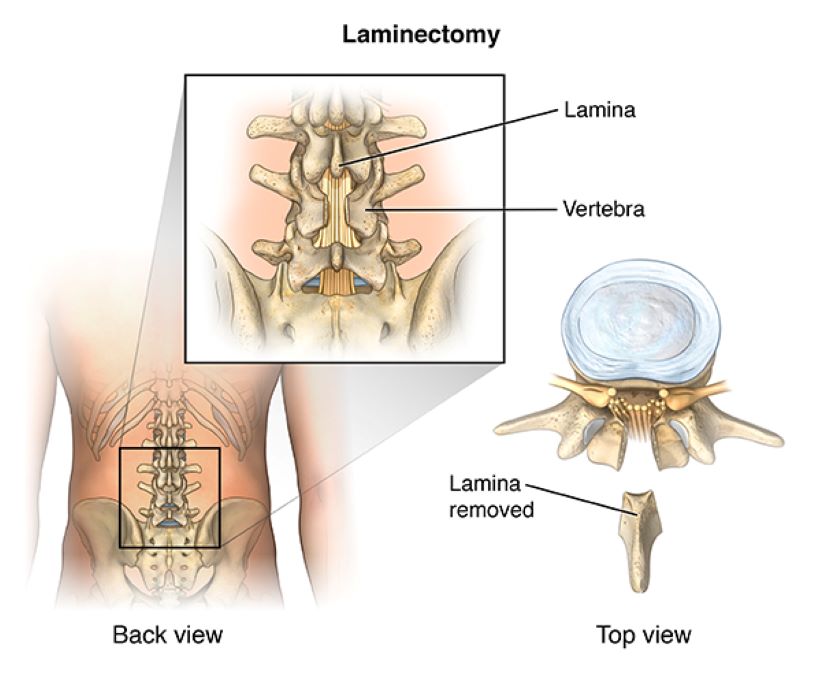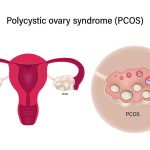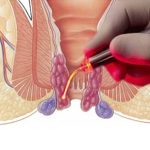Back pain is one of the most common reasons people visit an orthopaedic or spine specialist. While many cases resolve with rest, physiotherapy, and medication, some severe spine problems require surgical intervention. One such effective and widely performed surgery is Laminectomy.
What is Laminectomy?
Laminectomy is a surgical procedure performed to relieve pressure on the spinal cord or nerves. It involves removing a small section of the vertebral bone called the lamina, which forms the backside of the spinal canal. By removing this bone, the surgeon creates more space for the spinal cord and nerves, reducing pain and other symptoms caused by nerve compression.
Laminectomy is often recommended when non-surgical treatments have failed to provide relief, or if nerve compression is affecting mobility and daily function.
Common Causes Requiring Laminectomy
Spinal nerve compression can happen due to several conditions, especially with age or spinal wear and tear. Some common causes include:
- Spinal Stenosis: A condition where the spinal canal narrows, compressing the nerves.
- Herniated (Slip) Disc: When the cushioning disc between the vertebrae bulges or ruptures, it can press on nearby nerves.
- Osteoarthritis and Bone Spurs: Overgrowth of bone due to arthritis can narrow the space in the spinal canal.
- Degenerative Disc Disease: Age-related disc degeneration can reduce space and flexibility in the spine.
- Spine Tumors or Injuries: Rarely, abnormal growths or trauma can also compress the spinal cord.
When is Surgery Needed?
Laminectomy is usually considered when:
- Back pain radiates to the legs (sciatica) and worsens over time.
- You experience numbness, weakness, or tingling in your limbs.
- There is difficulty in standing or walking due to nerve compression.
- Conservative treatments such as physiotherapy, medication, or injections have not helped.
- In some cases, urgent surgery may be required if there is a risk of nerve damage or loss of bladder/bowel control.
Procedure and Recovery
Laminectomy is often performed under general anesthesia. During the procedure, the surgeon removes the lamina and any other structures pressing on the nerves. In some cases, the procedure is combined with spinal fusion to stabilize the spine.
With advancements in minimally invasive spine surgery, patients experience:
- Smaller incisions
- Reduced post-operative pain
- Shorter hospital stays
- Quicker recovery
Most patients start walking within a day or two after surgery. With proper physiotherapy and follow-up care, full recovery can be expected within a few weeks to months, depending on the condition and overall health.
Expert Spine Care at Chetna Hospital
At Chetna Multispeciality Hospital, Chinchwad, we offer advanced diagnostic and surgical care for spine disorders. Dr. Nirmal Patil, our expert Orthopaedic Spine Surgeon, specializes in minimally invasive spine surgeries, including Laminectomy, with a focus on fast recovery and long-term relief.
If you’re struggling with chronic back pain, don’t delay. Early diagnosis and the right treatment can save your spine and restore your quality of life.
For Consultation Contact us on 9158680739 / 9158681123
Website - www.chetnahospital.co.in
Address – Chetna Hospital, Sambhajinagar, MIDC, G Block, Near Rotary Club, Chinchwad 411019
.
.
.
#pune#pcmc#chinchwad#hospital#medical#medicalservices#spinesurgeon#backspecialist#sciatica#sciaticnerve#sciaticapain#sciaticatreatment#spinesurgery#spinespecialist#spinedoctor#backpaindoctor#endoscopicspinesurgery#orthopaedicsurgeon#mistlifsurgery#cervicalpain#spinalcord#rediculopathy#backpainrelief#slippeddisc#spine#neckpain#spinalstenosis#lumberlordosis#backbonesurgery













